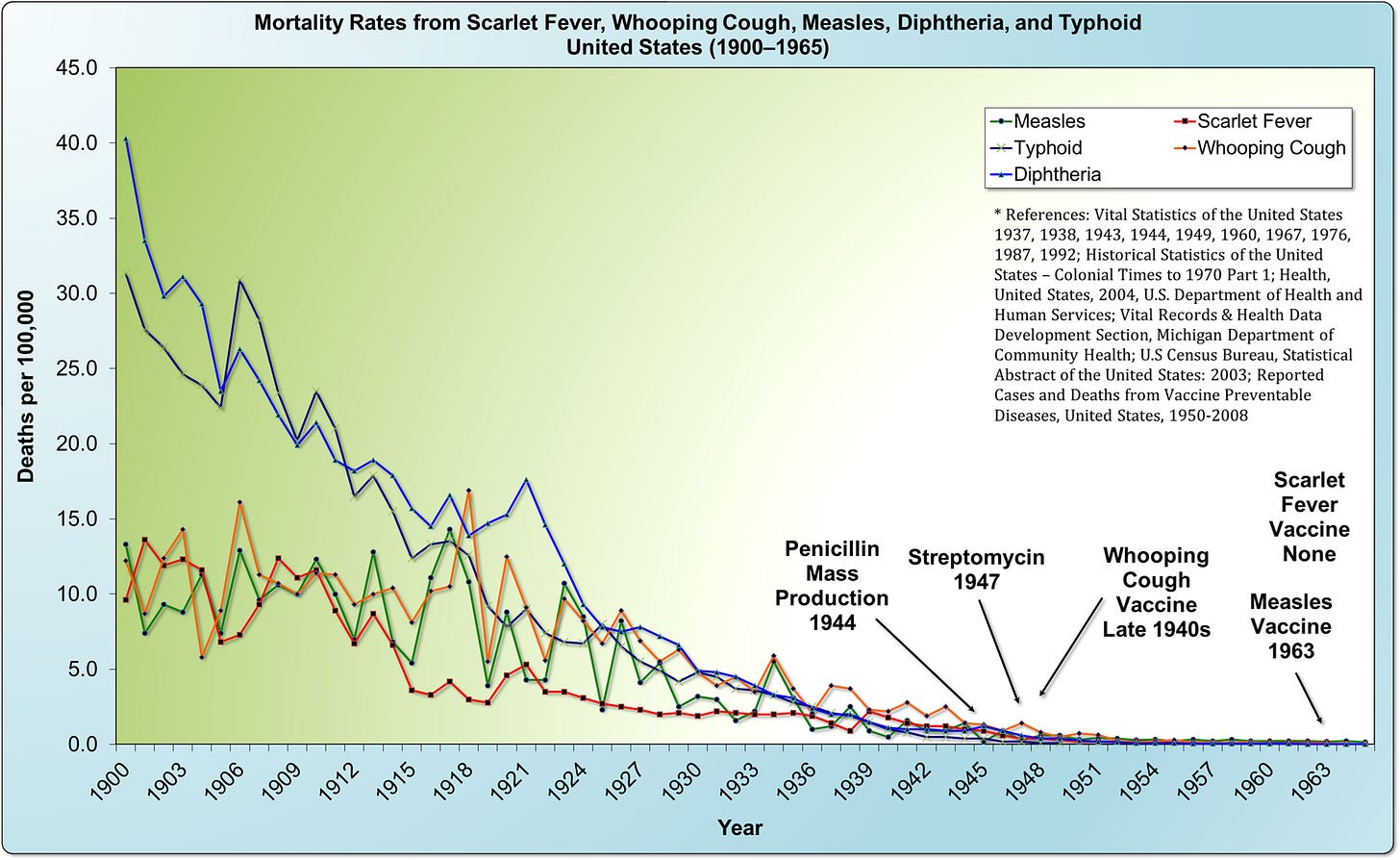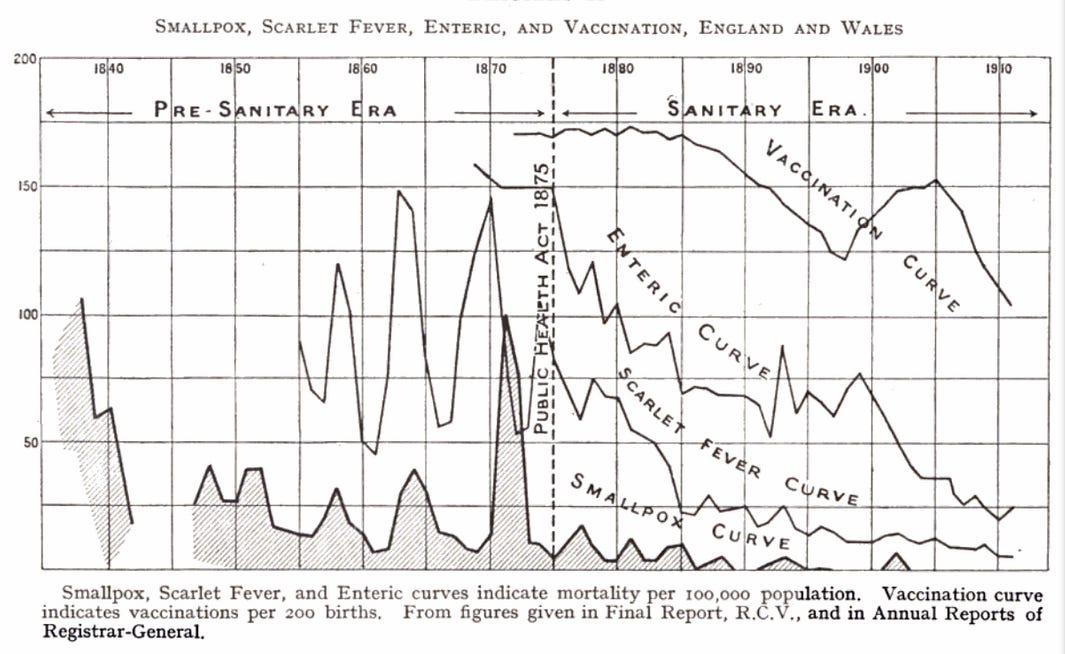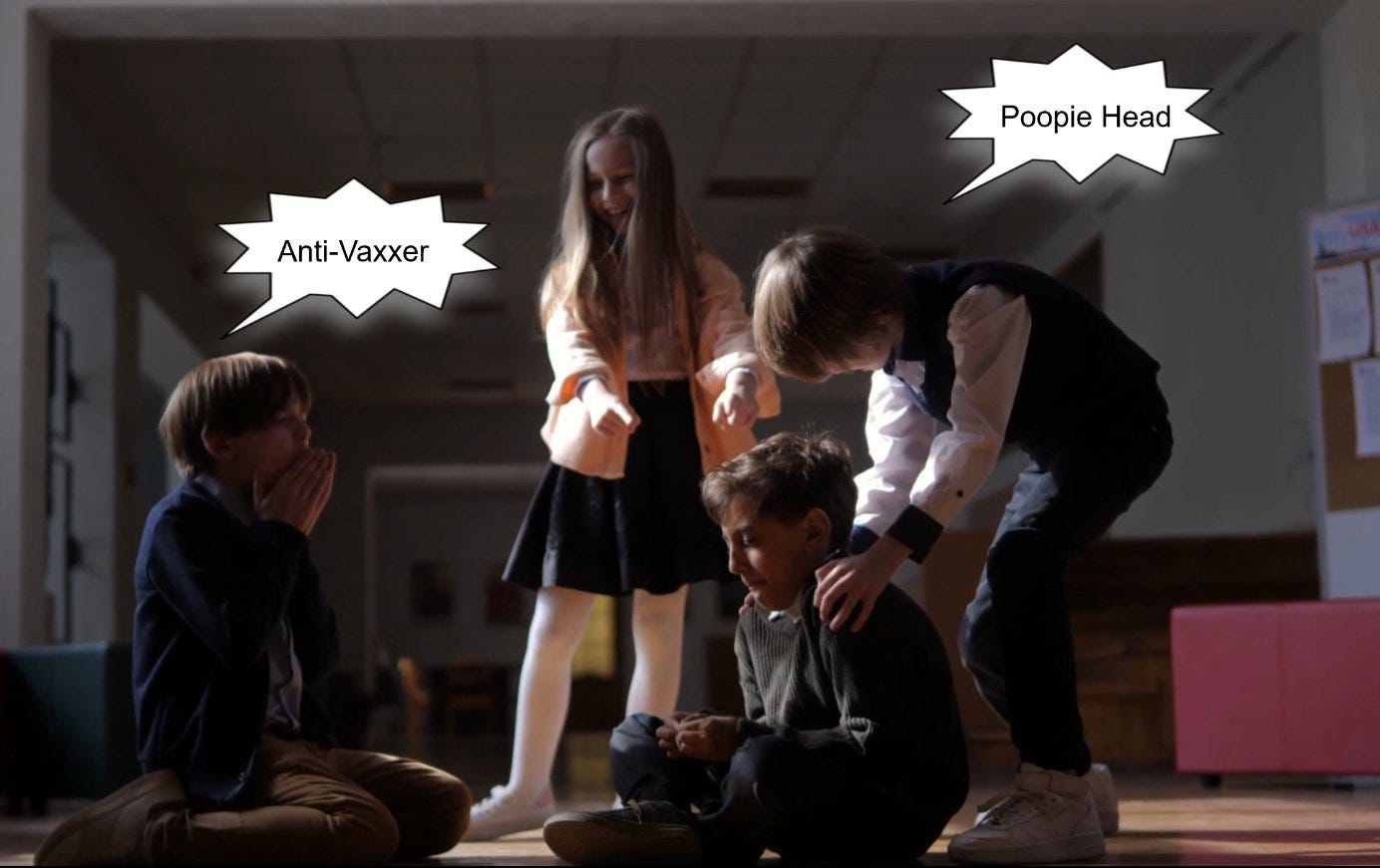All governments are run by liars, and nothing they say should be believed.
—I.F. Stone
The most dangerous man to any government is the man who is able to think things out for himself… Almost inevitably, he comes to the conclusion that the government he lives under is dishonest, insane, and intolerable.
—H.L. Mencken
The conscious and intelligent manipulation of the organized habits and opinions of the masses is an important element in democratic society.
—Edward Bernays, Propaganda, 1928
In a controversial move, U.S. Health and Human Services Secretary Robert F. Kennedy Jr. recently dismissed the entire CDC vaccine advisory panel, replacing it with eight new members. Many of these members have been vocal critics of the government’s COVID-19 response.[1] Kennedy cited conflicts of interest within the former Advisory Committee on Immunization Practices (ACIP) and pledged to appoint “highly credentialed” experts to review recommendations for COVID-19 and HPV vaccines.
The decision has drawn mixed reactions—some celebrate it as long-overdue reform, while others fear it undermines public health. But will this change anything fundamentally? Will the panel present data that challenges conventional vaccination narratives? Will alternative perspectives on health and medical interventions finally get a fair hearing?
The Forgotten Decline in Measles Deaths—Before Vaccines
In 1962—just one year before the U.S. introduced its first widely used measles vaccine—measles was still considered a routine childhood illness. While complications and deaths did occur, the disease was generally self-limiting. Public perception has since shifted dramatically, but historical data tell a different story—one often omitted from modern discourse.
As noted by Alexander D. Langmuir, MD, in 1962:
“[Measles is a] …self-limiting infection of short duration, moderate severity, and low fatality.”[2]
A closer look at U.S. mortality data from that year reveals that measles accounted for just 408 deaths—a mere 0.022% of total fatalities, ranking #36 (out of 41) among leading causes.[3] This was before any national vaccination program. By contrast, tuberculosis (9,506 deaths; #17) and syphilis (2,811 deaths; #30) claimed far more lives yet received far less public attention. Scarlet fever, responsible for 102 deaths (#38), is rarely discussed today.

Tuberculosis is particularly noteworthy. Despite the availability of the BCG vaccine, the U.S. never widely adopted it due to doubts about efficacy and declining domestic risk. Yet while measles dominates public health debates, TB and scarlet fever have faded into obscurity. This raises critical questions: Why are some diseases emphasized over others? Does the existence of a vaccine dictate governmental and medical scare tactics?
The New England Example: Measles Mortality Before Vaccination
A regional breakdown of measles deaths in 1962 highlights how negligible fatalities had become in developed areas even before vaccines:
Connecticut: 0 deaths
Maine: 1 death
Massachusetts: 0 deaths
New Hampshire: 0 deaths
Rhode Island: 1 death
Vermont: 3 deaths
Only five measles deaths occurred across all six states that year—a stark contrast to today’s alarmist rhetoric. These figures suggest that improved sanitation, nutrition, and medical care had already reduced measles mortality to near-irrelevance in affluent regions by the early 1960s.
Despite this, introducing the measles vaccine was met with high hopes. Yet the earliest inactivated version caused severe adverse effects, including pneumonia, encephalopathy, and atypical measles.
“Atypical measles was characterized by a higher and more prolonged fever, unusual skin lesions and severe pneumonitis compared to measles in previously unvaccinated persons. The rash was often accompanied by evidence of hemorrhage or vesiculation. The pneumonitis included distinct nodular parenchymal lesions and hilar adenopathy. Abdominal pain, hepatic dysfunction, headache, eosinophilia, pleural effusions and edema were also described. Cases of atypical measles were reported up to 16 years after receipt of the inactivated vaccine. Administration of the live virus vaccine after 2 to 3 doses of killed vaccine did not eliminate subsequent susceptibility to atypical measles and was often associated with severe reactions at the site of live virus inoculation.”[4]
Even the improved live virus vaccine often triggered high fevers and rashes, requiring immune serum globulin to mitigate reactions. Optimistic predictions of measles eradication by 1967[5] proved premature, to say the least, as we’re still stuck with an endless measles vaccine schedule.
Historical Data vs. the Dominant Vaccine Narrative
Mortality records from England and Wales—dating back to 1838—show that deaths from measles and whooping cough had already declined by nearly 100% before national vaccination campaigns. U.S. data reflect the same trend: over 98% of the reduction in measles deaths occurred before 1963.
The real, often overlooked story is that declines in infectious disease mortality were driven not by vaccines, but by sweeping societal advancements: clean water, better nutrition, higher living standards, and medical access. Typhoid, typhus, diphtheria, smallpox, and scarlet fever all receded as public health infrastructure improved.
As argued in Dissolving Illusions, the greatest gains in public health came not from targeting individual pathogens but from elevating overall human well-being. This evidence-based perspective is crucial for a balanced understanding of disease prevention—and for fostering informed debate on medical interventions.
Smallpox: The Complicated History of the First Vaccine
The very concept of vaccination rests on the triumph of the smallpox vaccine. Yet the true history is far more complex—and bizarre—than most realize. Buried in old medical journals and forgotten texts lies a story rarely taught today.
By 1875, smallpox deaths had begun declining alongside other infectious diseases—despite falling vaccination rates. This phenomenon did not go entirely unnoticed. In 1914, Dr. Millard wrote in The Vaccination Question in the Light of Modern Experience:
“For forty years, corresponding roughly with the advent of the “sanitary era,” smallpox has gradually but steadily been leaving this country (England). For the past ten years the disease has ceased to have any appreciable effect upon our mortality statistics. For most of that period it has been entirely absent except for a few isolated outbreaks here and there. It is reasonable to believe that with the perfecting and more general adoption of modern methods of control and with improved sanitation (using the term in the widest sense) smallpox will be completely banished from this country as has been the case with plague, cholera, and typhus fever. Accompanying this decline in smallpox there has been a notable diminution during the past decade in the amount of infantile vaccination. This falling off in vaccination is steadily increasing and is becoming very widespread.”[6]
His book included a chart showing that deaths from scarlet fever, enteric fever, and smallpox all declined simultaneously starting in the 1870s—while vaccination rates dropped by 40% between 1885 and 1910, with no resurgence of smallpox.
By the late 1800s, smallpox itself had changed. After 1897, the severe, deadly form of the disease vanished from the U.S. A 1913 Journal of Infectious Diseases article noted that while smallpox had a 20% death rate in 1895-96, it plummeted to 0.26% by 1908. By the 1920s, a milder strain circulated—even among unvaccinated populations.
"On the whole the disease seems to have shown a tendency to diminish, somewhat in severity. This tendency is not marked and the somewhat lower case fatality noted in later years may be due to the better recognition of cases, now that the type has become more widely known. At first fatalities of 1 to 2 per cent and even more were commonly reported, while later fatalities have often been much less. Thus in North Carolina in 1910 there were 3,875 cases with 8 deaths, a fatality of 0.2 per cent, and in 1911 there were 3,294 cases in that state without a single death.”[7]
“Individual cases, or even epidemics, occur in which, although there has been no protection by vaccination, the course of the disease is extremely mild. The lesions are few in number or entirely absent, and the constitutional symptoms mild or insignificant.”[8]
By 1940, as reported in Public Health Reports, smallpox deaths had plummeted by over 98% despite falling vaccination rates.[9]
By 1946, smallpox had all but disappeared from the Western world.
“What has been the cause of the rise and fall of smallpox? Its decline in the later decades of the nineteenth century was at one time almost universally attributed to vaccination, but it is doubtful how true this is. Vaccination was never carried out with any degree of completeness, even among infants, and was maintained at a high level for a few decades only. There was therefore always a large proportion of the population unaffected by the vaccination laws. Revaccination affected only a fraction. At the present the population is largely entirely unvaccinated. Members of the public health service now flatter themselves that the cessation of such outbreaks as do occur is due to their efforts. But is this so?”[10]
Compulsory vaccination unceremoniously ended in England in 1948, shortly after the end of World War II.
“...in Leicester during the 62 years since infant vaccination was abandoned there have been only 53 deaths from smallpox, and in the past 40 years only two deaths. Moreover, the experience in Leicester is confirmed, and strongly confirmed, by that of the whole country. Vaccination has been steadily declining ever since the “conscience clause” was introduced, until now nearly two-thirds of the children born are not vaccinated. Yet smallpox mortality has also declined until now quite negligible. In the fourteen years 1933-1946 there were only 28 deaths in a population of some 40 million, and among those 28 there was not a single death of an infant under 1 year of age.”[11]
The myth that a vaccine eradicated smallpox remains deeply ingrained—serving as the foundation for all subsequent vaccines.
“Contrary to popular belief smallpox was not eradicated by mass vaccination. Though tried initially it proved difficult to implement in many countries and was abandoned in favour of surveillance-containment. This involved trained workers searching for cases, with rewards for those who found them. Cases and their contacts were then isolated; contacts were vaccinated.”[12]
The Paradigm Trap: Will We Ever Re-examine Vaccination?
Governmental and medical organizations, like the CDC, have had this data on the decline of deaths from diseases before and without vaccines for at least half a century. Yet, they have never shared it with the public. Why? Is it because they know that for these programs to continue, they need to hide it? What if a significant number of the public knew about this information? Would they demand the freedom to choose?



Governments have learned that they need to force their ideas onto the public through laws, mandates, and “recommendations,” crushing any opposing voices. We all saw how politicians and “public health” fanatics, drunk on their own arrogance and power, forced their notions on the public during the COVID-19 fiasco. Like any schoolyard bully, their tools are: self-assured arrogance, name-calling, obscuring the truth, and above all, fear.
Despite flag-waving and declaring Western countries are all about freedom, that’s never been true. In the 1800s, compulsory vaccination laws swept the planet. Parents were fined and imprisoned if they didn’t follow orders, even when their children were injured or killed. And make no mistake, they never cared if you died from the vaccine; they only ignored or covered up those deaths.
The law was relentless in forcing their ideology down the throats of everyone they could find to be vaccinated. There were no concerns about injuries or deaths from this medical procedure. Medical men and governments were simply arrogant and drunk on their own power, no matter how many died from the vaccine or if it even worked. Sound familiar?
“After the serious smallpox epidemic of 1870-1, part of the pandemic which swept over Europe, the appointment of vaccination officers was made compulsory, and the authorities in Leicester, as elsewhere, attempted to enforce vaccination more rigorously. Prosecutions in the town increased from two in 1869 to over 1,100 in 1881, the total for the twelve years being over 6,000. Of these, 64 had involved imprisonment and 193 distraints [seizure of property to obtain money owed] upon goods, the latter often being effected with much difficulty owing to popular sympathy with the defendants. All classes of the community were represented—among those who set the law at defiance, and those who were prosecuted were regarded as martyrs.”[13]
It wasn’t until 1885 when the people of Leicester, England, rebelled against compulsory vaccination that anything changed. It certainly didn’t come from the governments or medical establishments, which would have continued to vaccinate for smallpox for eternity.
“Leicester’s small-pox history, and her successful vindication of sanitation as a small-pox prophylactic, will bear the closest scrutiny. Each successive epidemic since vaccination has decreased, with a larger proportion of unvaccinated population, furnishes a still lower death-rate.”[14]
With the ACIP now under new leadership, will real data finally be seen? Don’t hold your breath.
What happens when the next administration reverses these so-called “reforms,” perpetuating the endless cycle of cradle-to-grave vaccinations? Will we continue to be force-fed mandates under the guise of “settled science” and “public good”—while corporations profit and the public serves as unwitting test subjects?
The only way this will stop is if enough of the public has this knowledge and simply rebels against their strong-armed, fear-based tactics. If you’re waiting for someone in the government to save you, they won't. They never have and never will. It is only when the public forces change, like the good people of Leicester did 140 years ago, that this will stop. Until then, enjoy the window dressing show.
[1] Kennedy names new members of CDC vaccine advisory panel days after removing previous advisers, CNN, June 11, 2025, https://www.cnn.com/2025/06/11/health/kennedy-new-members-vaccine-advisory-panel
[2] A. Langmuir, “The Importance of Measles as a Health Problem,” American Journal of Public Health, vol. 52, no. 2, 1962, pp. 1–4.
[3] Causes of Death in the United States in 1962 — Vital Statistics of the United States, Vol II – Mortality, Part A, pp. 18-21.
[4] D. Griffin et al., “Measles Vaccines,” Frontiers in Bioscience, vol. 13, January 2008, pp. 1352–1370.
[5] David J. Sencer, MD; H. Bruce Dull, MD; and Alexander D. Langmuir, MD, “Epidemiologic Basis for Eradication of Measles in 1967,” Public Health Reports, vol. 82, no. 3, March 1967, p. 256.
[6] Harry Bernhardt Anderson, State Medicine a Menace to Democracy, 1920, p. 84.
[7] Charles V. Chapin, “Variation in Type of Infectious Disease as Shown by the History of Smallpox in the United States,” The Journal of Infectious Diseases, vol. 13, no. 2, September 1913, p. 178.
[8] John Price Crozer Griffith, The Diseases of Infants and Children, Volume 1, 1921, W.B. Saunders Company, p. 370.
[9] “Smallpox in the United States: Its decline and geographic distribution,” Public Health Reports, vol. 55, no. 50, December 13, 1940, pp. 2303-2312.
[10] Journal of the Royal Sanitary Institute, vol. 66, 1946, p. 176.
[11] C. Killick Millard, MD, DSc, “The End of Compulsory Vaccination,” British Medical Journal, December 18, 1948, p. 1074.
[12] Derrick Baxby, “The End of Smallpox,” History Today, March 1999, p. 16.
[13] C. Killick Millard, MD, DSc, “The End of Compulsory Vaccination,” British Medical Journal, December 18, 1948, p. 1073.
[14] J. T. Biggs, Leicester: Sanitation Versus Vaccination, 1912, pp. 459–460.











I’m afraid I am with Mencken and Stone. I fail to see why we need the CDC or NIH. But then, I worked with both and got a massive lesson in BS management. To turn this around, we‘d need a lot more readers as opposed to Tik Tok and YouTube followers. Somehow, I do not foresee that happening as frankly I have difficulty prying people away from their phones for more than a nanosecond. I have heard the craziest things and when I ask where the source of information came from, I often receive, “YouTube” as a response. My outlook is no longer quite as optimistic as it once was.
So while everyone was prematurely rejoicing that RFK kicked out the previous vaccine team, he's installed 8 new ones. All pro vaccine. Just like him.
RFK has said he supports the childhood schedule. He openly and loudly encouraged people to get the measles vaccine recently.
Why on earth would you think he's against them?
IF he's really serious, it would be declared that vaccines are no longer required to get into schools, jobs, into the country, etc. If you wanted to get them - great! Inject yourself to your hearts content. If you didn't want to get them - great! He would also publish the data gathered from the National Vital Statistics showing all infectious disease dropped to nearly 100% BEFORE the introduction of vaccines on the CDC website. This information should go viral. Publish those charts!
The choice should always be the individuals. Not someone else forcing you to inject foreign highly toxic substances against your will